A Guide To Cycling In Tokyo With Kids
All you need to know about cycling rules, schools and practice courses
Tokyo has a different look when seen from a bicycle!
Tokyo can have some of the best railway and subway system in the world, but locals know that one of the best ways to get around the tightly packed metropolis is no other than by bicycle. If you’re cycling around, however — especially with kids! — you’ll need to be extra cautious, packed with all the information and totally ready to hit the road. Here’s all you’ll need to know.
Know the rules
Just like driving a car in Japan, when cycling on the road you need to keep to the left-hand side. Other traffic rules include coming to a full halt at stop signs (止まれ) and intersections, not riding side-by-side with another cyclist and not carrying a passenger on your handlebars or any other undesignated spot, not using earphones and not carrying an umbrella while cycling. You will need to have a front light attached to your bike to use when dark.
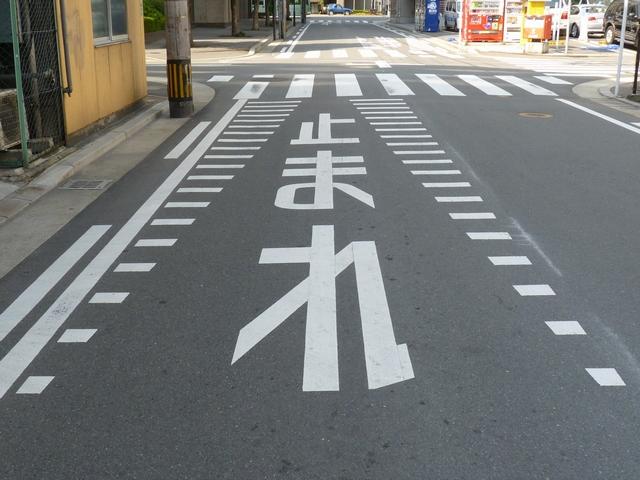
The 止まれ sign means STOP and should be followed by cars and cyclists alike.
Riding on the sidewalk: In principle, bicycles should be ridden on the road, but there are a number of exceptions that permit riding on sidewalks, in particular, when the cyclist is either younger than 13 or older than 70. All cyclists are allowed to ride on the sidewalk when safety reasons require it and when an area is signposted for dual use by pedestrians and cyclists. In this case, you’ll see a round blue street sign with pictures of a bicycle and of a parent and child on it (can you find it in the photo below?). When riding on the sidewalk, go slowly, keep to the side of the street that is closest to the road, and always give way to pedestrians.
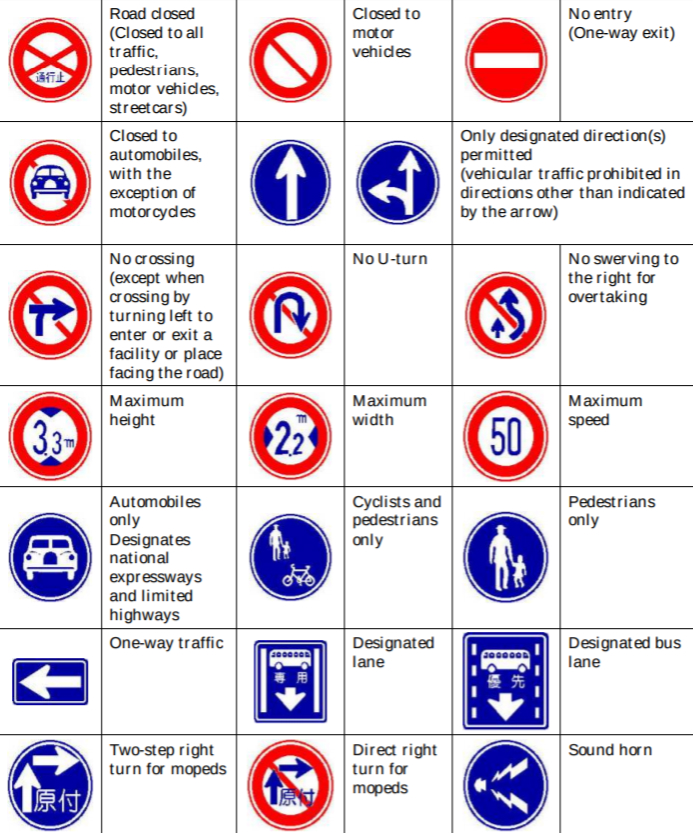
Common road signs you will need to know when cycling in Japan. Photo credit: Japan National Police Agency
Carrying kids: According to Japan’s traffic law, cyclists aged 16 or over can carry up to two children at once. This could be two kids aged five or less, each harnessed into specifically designed child seats, or one child up to five years old in an attached seat and an infant in a child sling or carrier attached to the rider’s body. Carrying a third child, even in a baby sling, is not allowed.
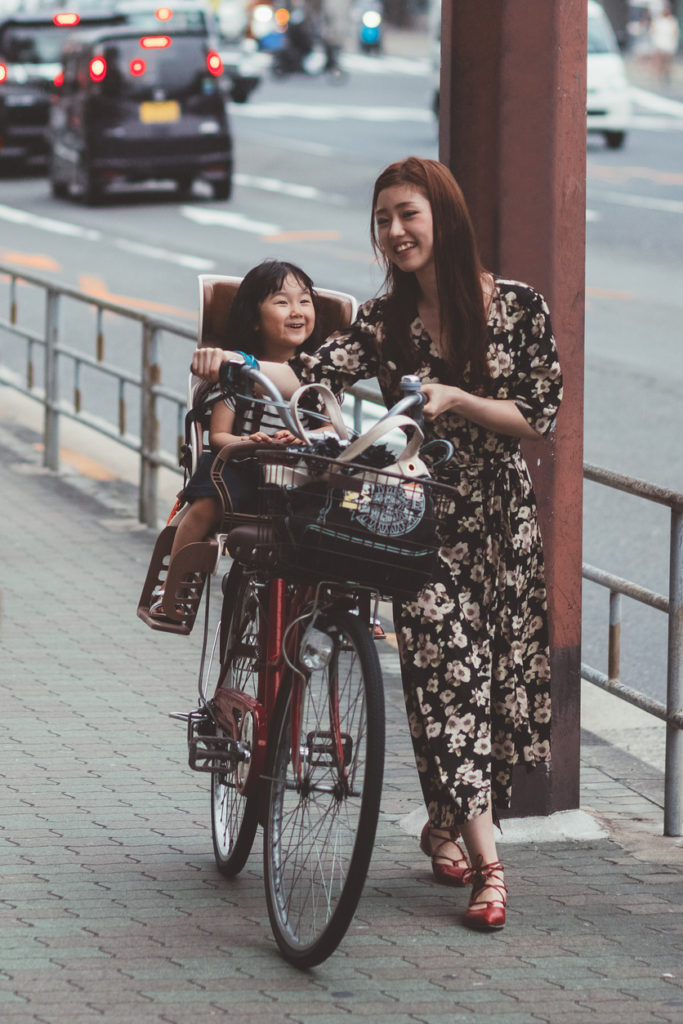
Helmets: Parents must make an effort to ensure that their children aged up to the age of 12 wear bike helmets. They are also responsible for providing sufficient training, knowledge and advice to their children to ensure that they ride safely and responsibly.
Bike lanes: Tokyo has some bicycle lanes on its roads. They are marked with white arrows and a picture of a cyclist or a bicycle as in the photo below.
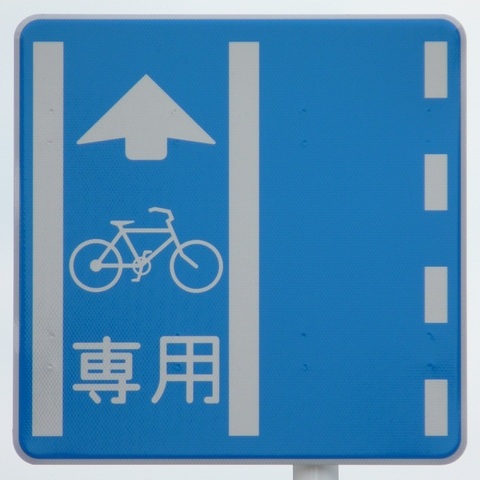
They are one way, in the direction of the arrows. You might also come across a line of blue arrows, with no picture, which is a bicycle navigation line to help riders work out how to cross complicated intersections.
Bicycle insurance
In recent years there have been many cases throughout Japan of extreme injuries, even death, caused by bicycle accidents that have led to millions of yen in court-ordered damage compensation payouts. Some of those were caused by children. In response, some regional governments, including Saitama Prefecture, Nagoya City, Kyoto, Osaka and Hyogo Prefectures, have required cyclists to have liability insurance, and in February 2019, Adachi Ward became the first area within Tokyo to decide to introduce compulsory bicycle insurance, in April 2020. It may be worth checking whether bicycle accidents are covered in your existing personal liability insurance or can be included as an add-on. A standard bicycle insurance costs somewhere between ¥3,000 to up to ¥10,000 a month.
Where to learn to ride
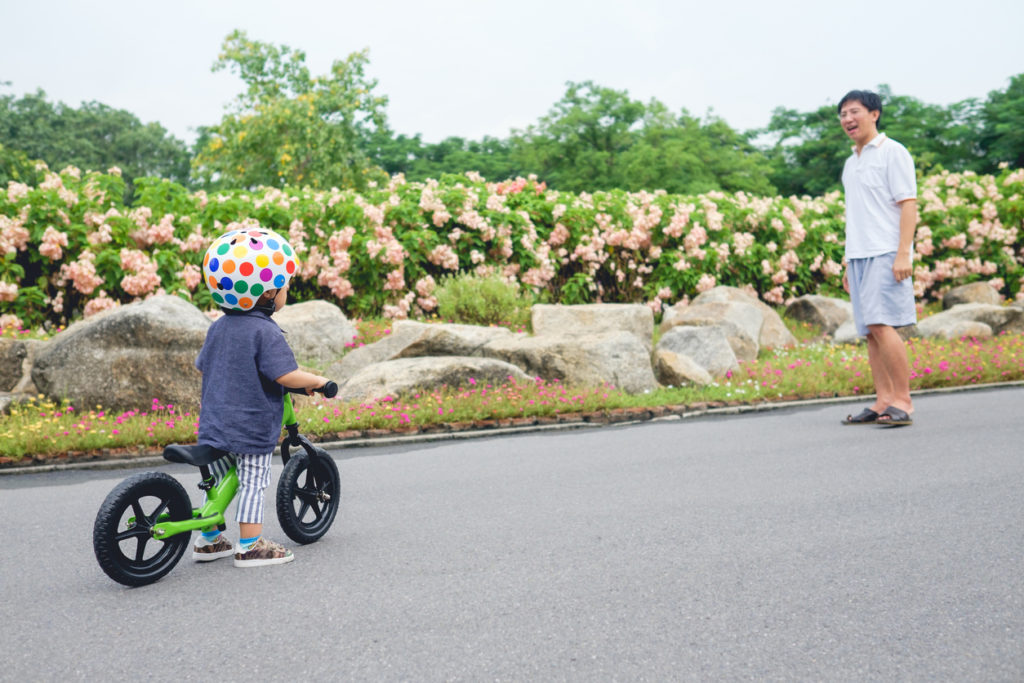
There are two great cycling schools in Tokyo, Palace Cycling School and Jingu Gaien Cycling School (details follow later). Both schools cater to kids of elementary school age (from five years old) and right on up to adults, but instruction is in Japanese.
At both schools, attendants will help learners pick a bicycle that suits their height, and then remove the pedals so that they first learn how to maintain balance on a moving bicycle. Once that is achieved, the instructor then attaches the pedals so that the student then adds pedaling to their bicycle balancing skills. Both schools estimate that a fast learner can grasp cycling in about 2-3 hours, and both give completion certificates to students who learn to ride there. There is no reservation system, and spaces can fill up fast, so get in line early if you don’t want to miss out on a particular session.
Palace Cycling School: This free cycling school, which is run by the Japan Bicycle Promotion Institute, is located in the outer gardens of the Imperial Palace. To sign up for lessons, go to the blue tent and write your name and age on a form that determines participants’ order. Students will be called in order from 9:45 a.m. to select a bicycle and to fill out an application form. You’ll be given a bib to wear that identifies you as a student. The lesson will typically start at 10 a.m. Helmets are available here, but you can bring your own. You aren’t allowed to use your own bike for lessons, though.
Preschoolers can get in on some cycling action at the kids’ corner, which has infants’ bikes available to ride in a cordoned-off area. To use these, go to the white tent and fill out an application form. They will give your child a bib to wear. Bike usage is limited to 90 minutes, but you can reapply if your child wants to get back in the saddle. This service aims to allow parents to teach their own kids how to ride. Registration here is from 10 a.m. to 2:30 p.m. and the area closes at 3 p.m.
There is also a section for training wheel-equipped bikes, which operates for the same hours but doesn’t require an application form. Kids can help themselves to the bicycles available and ride freely. Park benches line the practice area and there is plenty of lawn space, too, so why not bring lunch and a blanket and make a day of it.
Jingu Gaien Cycling School: This school, run by the Japan Cycling Association, has been teaching children and adults to cycle since 1982. It is located between sports stadiums in the outer garden of the Meiji Jingu Shrine. Children up to 12 years of age need to bring their own bike helmets to ride here. At the reception, you’ll be asked your child’s age and whether you want to apply for the morning or afternoon session. They will give you an application form and a number tag to take with you to the lesson. Lessons cost ¥1,000.
Where to practice
Yoyogi Park Cycling Center: This spot in the northern corner of Yoyogi Park isn’t a school, but provides lots of bicycles and space to let your child practice, or to let you teach them. It also rents out a great range of bicycles for use on its cycling course, though you may use your own bike.
To borrow a bicycle, buy a ticket at the vending machine just inside the building. Fill out some basic information on a usage form and hand it to an attendant. That person will help you pick a bike and adjust the saddle height to suit the rider. Return the bicycle to an attendant when you’re done.
Kids’ bikes have training wheels attached and can be rented for one hour for just ¥100 and an extra ¥50 for each 30 minutes after that. A little path toward the back will take you to a separate practice circuit just for little kids. Older kids can practice in one of the cordoned-off paths in front of the cycling center. Rental of an adult bike costs ¥210 for one hour plus ¥100 for each extra 30 minutes. Tandem bicycles cost ¥210 for a ride around the course, plus an extra ¥100 for each circuit thereafter. The cycling course is a dedicated concrete cycling track through quiet forest and mostly pedestrian free. The school is open from 9 a.m. to 4:30 p.m., except for Mondays, rainy days or when course conditions are bad.
Suginami Children’s Traffic Park: This is the place to come when your kids are ready to learn the road rules. The network of “roads” here spans 1.1 kilometers and includes stop signs, zebra crossings, traffic lights and more.
You can ride your own bicycle or borrow one for free from a wide selection. If cycling becomes dull, you can cross over to the pedal-powered go-karts that are available (free) on a separate circuit. There are also swings, a sandpit and other play equipment here, too. If you’re keen on further cycling, there’s even more. This park has an exit that connects to the Zenpuku-ji River Green Area Children’s Cycling Course. This is a 1.3-kilometer concrete path through parkland that riders will need to share with joggers and other general users. The park is open daily from 8:30 a.m. to 5 p.m. (bike rental is from 9 a.m. to 4:30 p.m.).
Komazawa Olympic Park Cycling Center: This facility has three cycling courses. The longest is 2.1-km and runs along the outskirts of the park and is also used by joggers. The one designed for little kids is called “the chiririn course,” where you can rent a bike for ¥100 an hour and ¥50 for each extra half hour. Some bikes have training wheels.
On weekends and public holidays on the family course, tandem bicycles and four-wheeled bikes that can fit two adults and four children are available for ¥210. The center is open daily from 9 a.m. to 4:30 p.m., except for Mondays (or following day if Monday is a public holiday) and New Year holidays.
Koganei Park Cycling Center: Koganei Park has a specialized cycling course and a separate practice area for small children. A broad range of rental bicycles is available for adults and kids. Those with training wheels cost ¥100 an hour to rent, while those without cost ¥210. Cyclists can also ride the general paths within this huge park, which includes play equipment, sports facilities, a barbecue area and the Edo-Tokyo Open Air Architectural Museum. Koganei Park Cycling Center is open from 9 a.m. to 4:30 p.m., daily, except for Mondays (or following day if Monday is a public holiday) and New Year holidays.
Ready to hit the road? Go for it!
For recommended cycling routes in Tokyo, see the app Bikemap.

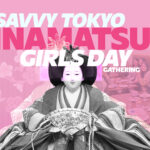



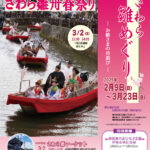






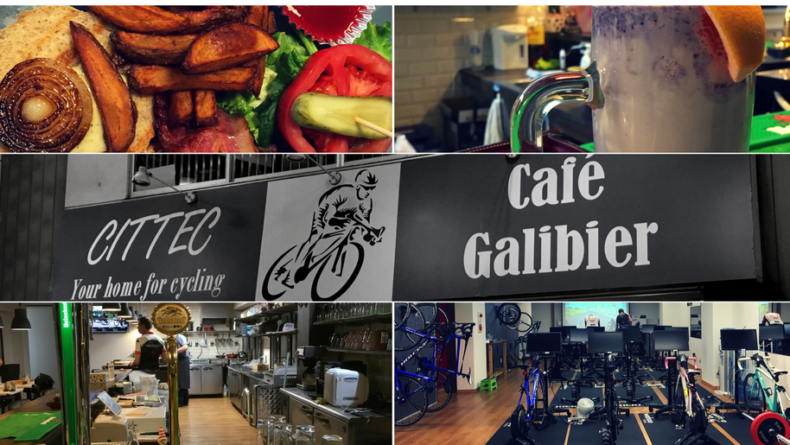
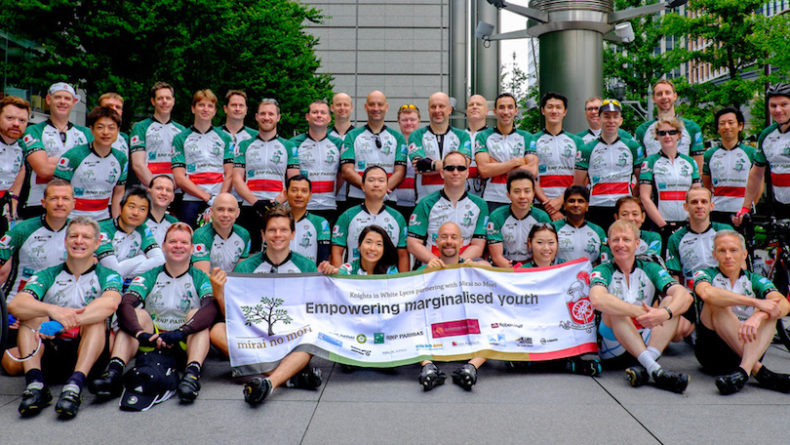
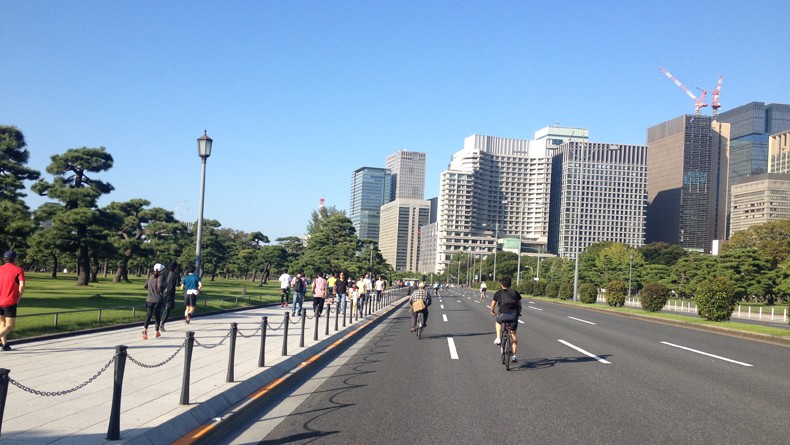
Leave a Reply